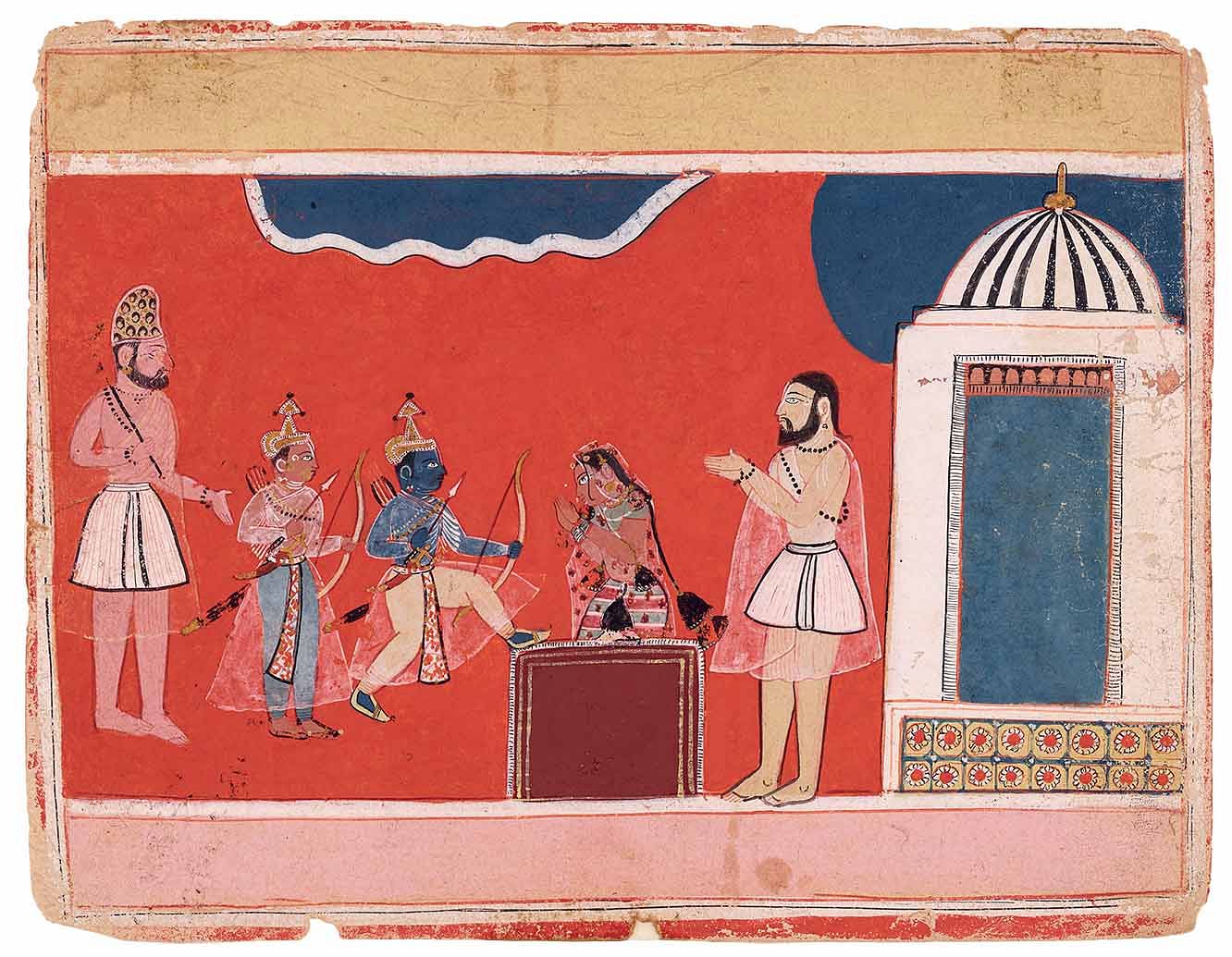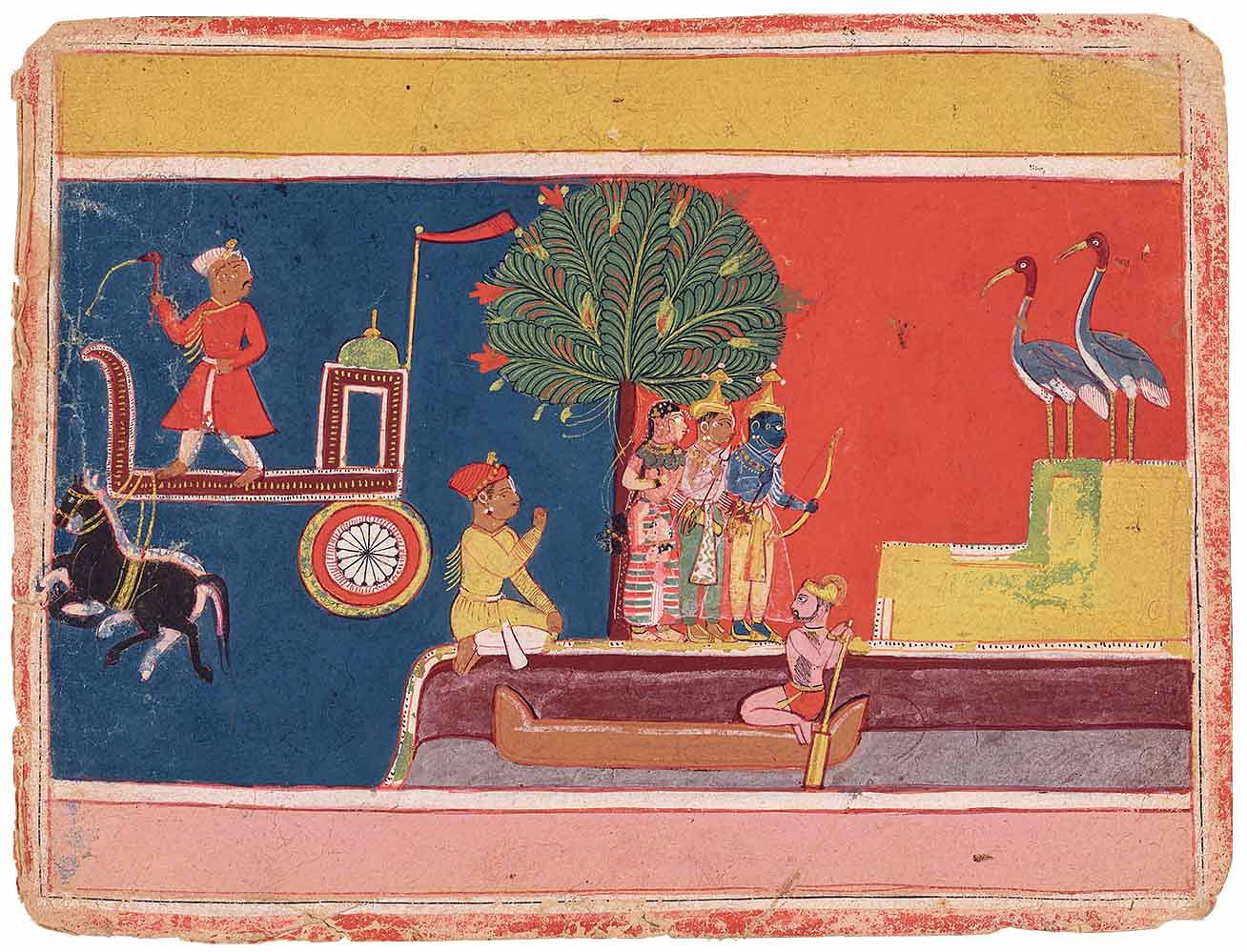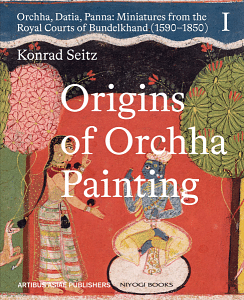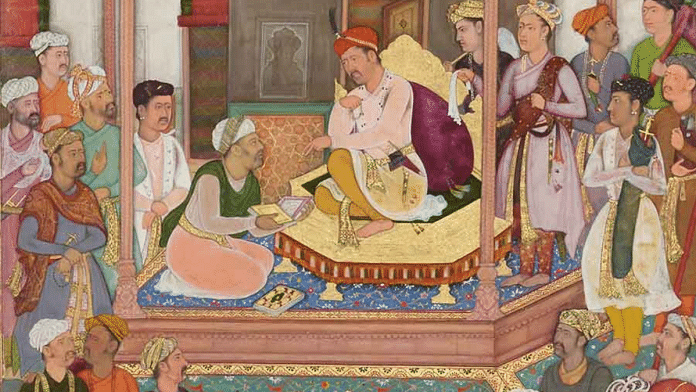The earliest illustrated Ramayana manuscripts that have come down to us are, paradoxically, in Persian and were commissioned by the Mughal emperor. Akbar had the Ramayana, along with the Mahabharata, translated into Persian in order to promote greater awareness of Hindu religion and culture among the empire’s Muslim elites. It is these Mughal Ramayanas that Orchha raja Ram Shah set the first illustrated Rajput Ramayana against. For the Bundelas, who, like the Sisodias of Mewar, traced their lineage all the way back to Rama, the Ramayana epic was family history. Just as Akbar propagated the descent of the Mughals from Genghis Khan and Timur by means of illustrated history manuscripts, so Ram Shah celebrated the divine descent of the Bundela clan from Rama by commissioning an illustrated Ramayana. He set the righteous rule of the Orchha rajas, who reigned in the name of Rama, against the adharmic foreign domination of the Mughal emperors. With the same intention, Jagat Singh I, the rana of Mewar, would commission his master painter Sahibdin fifty years later to create the great Mewar Ramayana of 1649–53.

The First Orchha Ramayana is the masterpiece of the Ram Shah period. It is not an illustrated “manuscript” but rather a picture book containing 150 to 160 pictures that were loosely placed between covers to form a pothi, the traditional Indian book. The basis for the illustrations is the Rama story as it is narrated in the Sanskrit Ramayana of Valmiki. The Brajbhasha texts inscribed on the reverse of the folios are captions that were written by various hands and presumably at different times.
The paintings were produced by the same workshop that made the Rasikapriya of catalog 1 and the Gitagovinda of catalog 2. We observe the same geometrized shapes, the same frontally depicted eyes within faces in profile, the same tree crowns and lianas entwining the trunks ( compare cats. 3.1 & 3.3 with cat. 1.24 ), the same blue sky patches edged with a wavy white band. New in the vocabulary of forms is the pavilion. We no longer find the minimalist pavilion of the Rasikapriya series, but instead a pavilion with wide walls and an Islamic dome derived from Sultanate architecture. This solid pavilion is a first step toward a more naturalistic style of representation. New as well is the color scheme of the series, the red/green complementarity of the color fields having been replaced by a red/blue contrast.

Whereas the style of the Rasikapriya and the Gitagovinda series derives from the Chaurapanchasika style, the style of the Ramayana has no connection with the style of the Palam Bhagavata Purana. These two series have a few conventional ornamental forms in common, such as the Persian rosette pattern ( cat. 3.1 ) or the decorative chariot wheel ( cat. 3.2 ), yet the lively figures of the Palam Bhagavata are very different from the static figures of the Orchha Ramayana. While the former depicts dramatic actions, often in pluriscenic images and continuous narration, the latter presents monoscenic icons for devotional meditation, selecting the significant moments of the sacred events and transforming them into timeless emblems of God’s redemptive love and power.
 Extracted with Permission from Origins of Orchha Painting: Orchha, Datia, Panna: Miniatures from the Royal Courts of Bundelkhand (1590-1850) VOL-I by Konrad Seitz, published by Niyogi Books.
Extracted with Permission from Origins of Orchha Painting: Orchha, Datia, Panna: Miniatures from the Royal Courts of Bundelkhand (1590-1850) VOL-I by Konrad Seitz, published by Niyogi Books.



